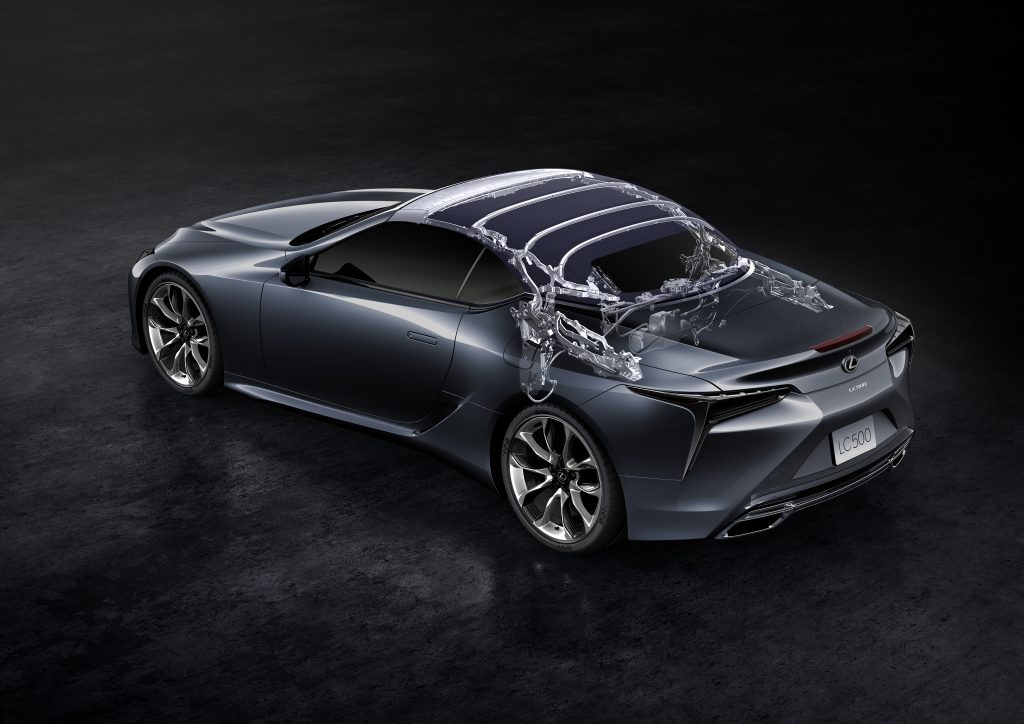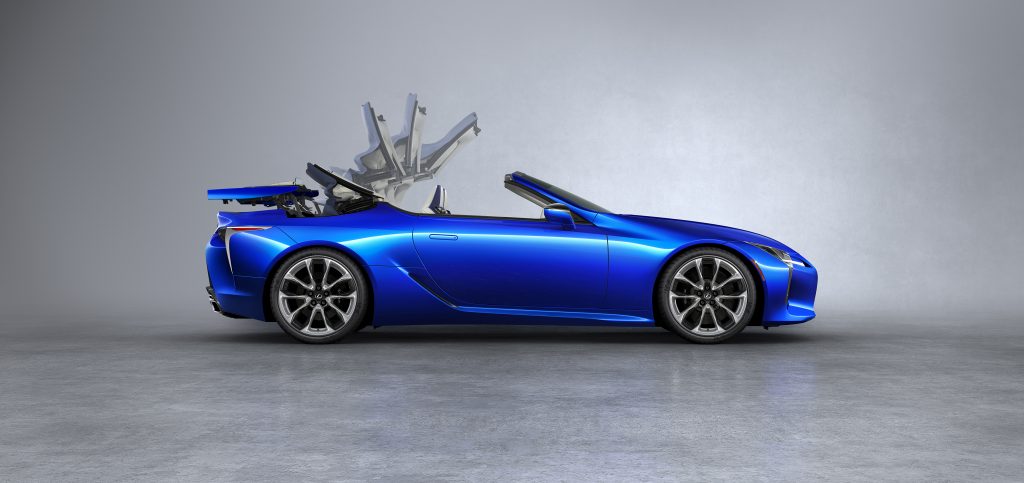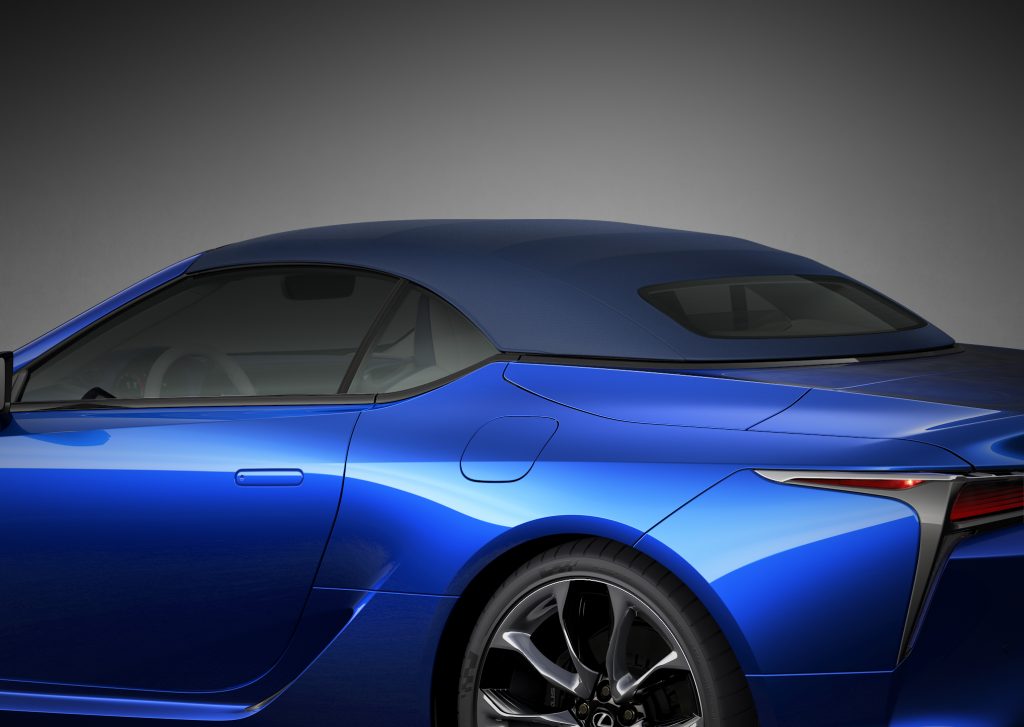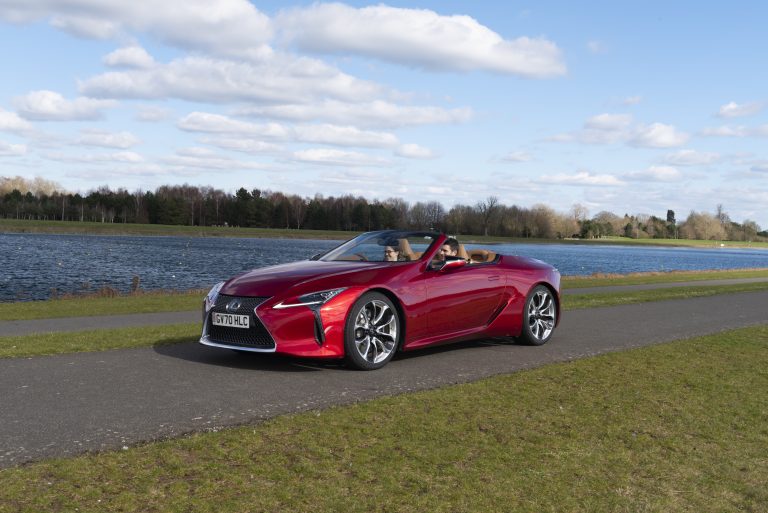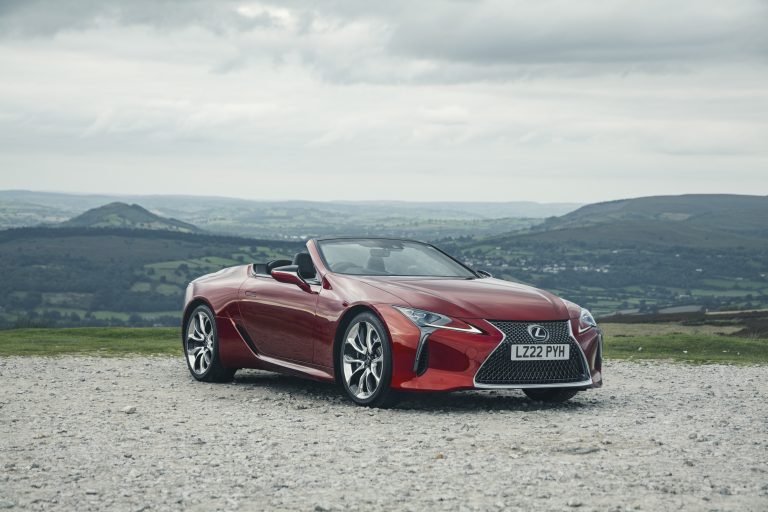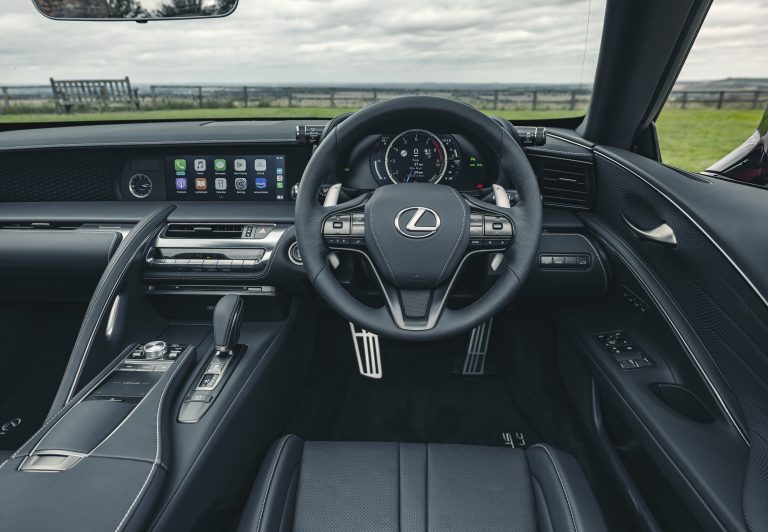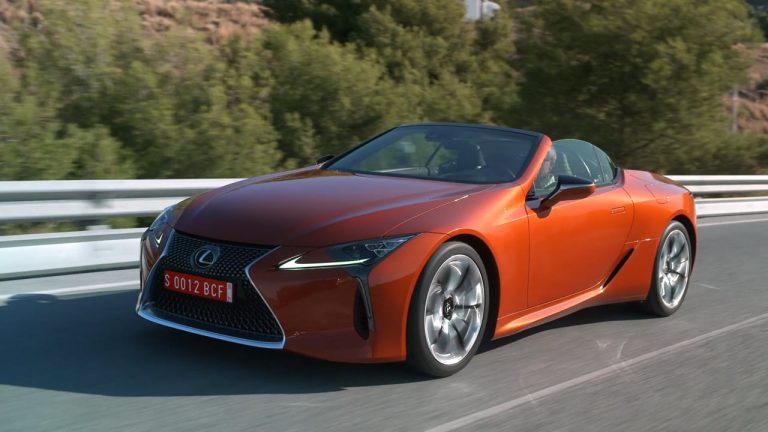The Lexus LC Convertible: Producing the Perfect Soft Top
- Lexus’s first soft top echoes the smooth profile of the LC Coupe
- Hydraulic roof system repeat-tested more than 18,000 times to ensure fail-proof quality
- Ingenious design allows for compact stowage with no loss of luggage compartment space
- Design and lightweight components contribute to the car’s dynamic performance
The LC Convertible is Lexus’s first soft-top model and no effort has been spared in ensuring its folding roof meets the highest standards of design and quality. To achieve its goals Lexus used innovative construction, engineering and materials and tested the roof to breaking point, far beyond what might be expected in day-to-day use by owners.
The design goal was for the new model to have its own identity as a convertible while retaining the powerful lines of the LC coupe. When raised, the soft top creates a smooth silhouette, echoing the profile of the coupe. No frame elements are visible and there are no obtrusive joins between the window glass and the canvas. The material has a multi-layered construction that provides excellent soundproofing, so a quiet cabin ambience is preserved.
The roof is operated using a hydraulic mechanism that gives consistent, reliable performance. Raising and lowering the roof takes just 15 seconds, but speed was not the primary aim. Lexus focused instead on operation that reflects the quality that defines the brand, engineering a slight pause before the main part of the roof movement begins. This is inspired by the hiatus that is part of the traditional execution of Japanese calligraphy.
The top can be operated when the car is moving, at speeds up to 30mph/50km/h. To ensure it can cope with external factors such as headwinds, it was tested in a wind tunnel at up to 56mph/90km/h.
Extreme testing
In an example of Lexus’ human-centred design thinking, the hydraulic soft top was rigorously tested for reliability and fail-safe operation, so owners can have peace of mind about its lasting quality.
Where durability is concerned, testing parameters for repeat opening and closing are usually based on the assumption the mechanism will be in use for around 10 years. Lexus went much further, taking the system to breaking point. The roof went through around 18,000 cycles before a problem was encountered; even then, this was not a hazardous issue.
To counter situations where there is a risk of the soft top being unable to maintain its position after the hydraulic pressure is released, Lexus tested more than 1,000 different stopping patterns to identify the optimum solution. Controls have also been incorporated that ensure the roof can be operated problem-free in low temperatures, including during snowfall.
Speed Testing
Fitting a soft top had to be no barrier to the LC Convertible reaching the same top speed as the LC Coupe. Wind tunnel tests confirmed the car could be driven at maximum speed with the roof open and closed, simulating speeds up to almost 250mph/400km/h. Real-world testing also took place on a test track in the USA, the results confirming the roof in no way compromises the car’s speed potential.
Compact storage
The stowing of the roof presented significant challenges: it had to preserve the convertible’s silhouette when raised, but at the same time allow for a reasonable amount of space in the luggage compartment when lowered. The design goal was also to maintain a streamlined area around the car’s rear shoulders, avoiding the bulkiness found on some convertibles. These issues meant the roof had to fold into an unprecedentedly small space.
To achieve this, the team devised an innovative four-fold system, which, although a more complex design, allowed the roof to be stored between the rear suspension towers. Special stoppers were added to prevent any damage from interference between the soft top and surrounding parts.
The hydraulic system uses a single pump, so takes up less space than an electric version that would require several motors to be located in the luggage compartment. The pump was moved to the area behind the rear seats to avoid any loss of boot space, and silencing and noise insulation measures were added to maintain quietness.
Dynamic performance
The LC’s low centre of gravity is a key element in the quality of its dynamic performance. The convertible’s soft top has been engineered so that its heavy components are located low down and as near the centre of the vehicle as possible.
In fact, by positioning the hydraulic pump and the soft top within the car’s wheelbase, the centre of gravity is lower than that of the coupe. To save weight, Lexus has used a rare combination of magnesium and aluminium for the lightweight roof frame components; these are positioned above the car’s centre of gravity when the roof is closed. In this way, the roof contributes to the LC’s signature “even sharper, more refined” driving feel without sacrificing dynamic performance.
ENDS

